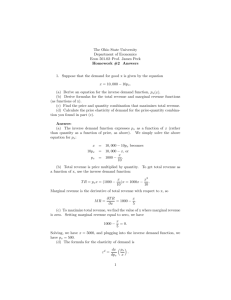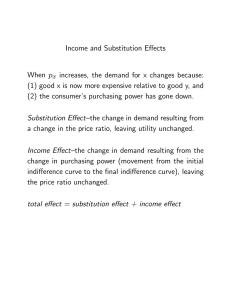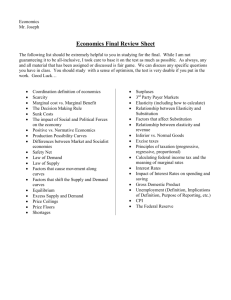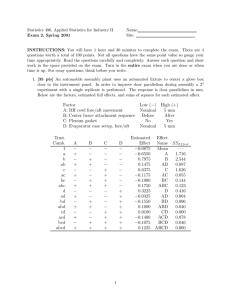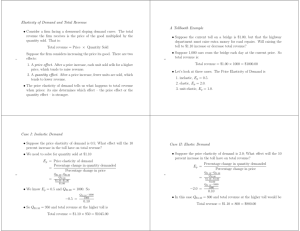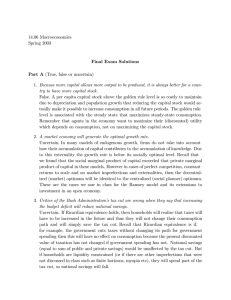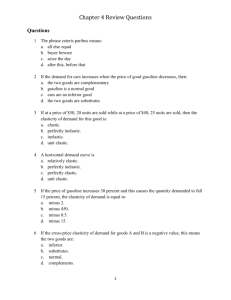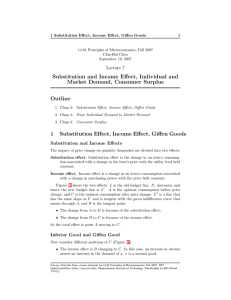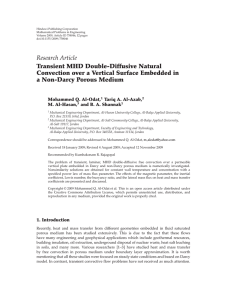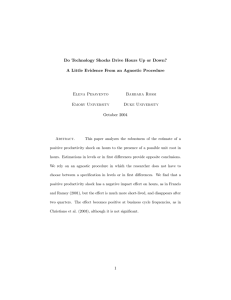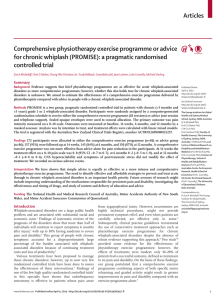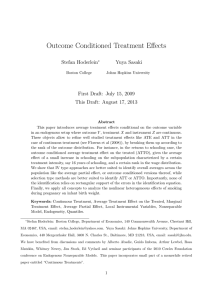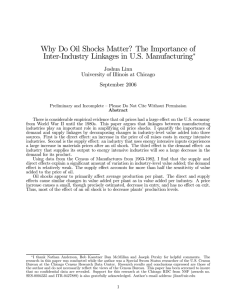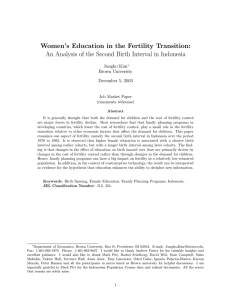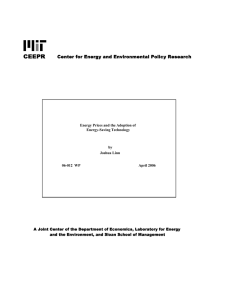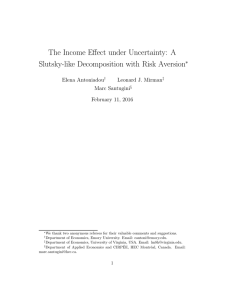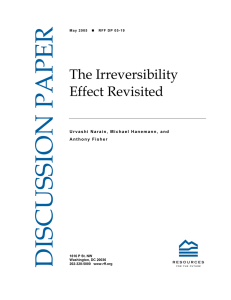Document 10351852
advertisement
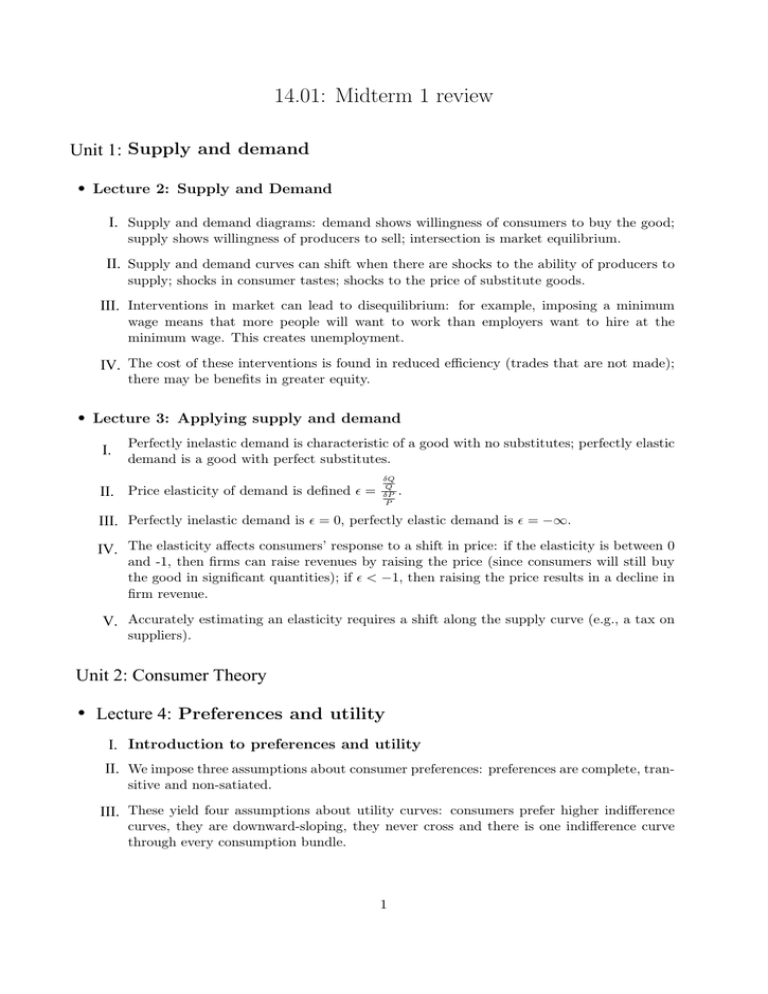
14.01: Midterm 1 review Unit 1: Supply and demand • Lecture 2: Supply and Demand I. Supply and demand diagrams: demand shows willingness of consumers to buy the good; supply shows willingness of producers to sell; intersection is market equilibrium. II. Supply and demand curves can shift when there are shocks to the ability of producers to supply; shocks in consumer tastes; shocks to the price of substitute goods. III. Interventions in market can lead to disequilibrium: for example, imposing a minimum wage means that more people will want to work than employers want to hire at the minimum wage. This creates unemployment. IV. The cost of these interventions is found in reduced efficiency (trades that are not made); there may be benefits in greater equity. • Lecture 3: Applying supply and demand I. Perfectly inelastic demand is characteristic of a good with no substitutes; perfectly elastic demand is a good with perfect substitutes. II. Price elasticity of demand is defined � = δQ Q δP P . III. Perfectly inelastic demand is � = 0, perfectly elastic demand is � = −∞. IV. The elasticity affects consumers’ response to a shift in price: if the elasticity is between 0 and -1, then firms can raise revenues by raising the price (since consumers will still buy the good in significant quantities); if � < −1, then raising the price results in a decline in firm revenue. V. Accurately estimating an elasticity requires a shift along the supply curve (e.g., a tax on suppliers). Unit 2: Consumer Theory • Lecture 4: Preferences and utility I. Introduction to preferences and utility II. We impose three assumptions about consumer preferences: preferences are complete, tran­ sitive and non-satiated. III. These yield four assumptions about utility curves: consumers prefer higher indifference curves, they are downward-sloping, they never cross and there is one indifference curve through every consumption bundle. 1 IV. Utility function is a function that transfers bundles of goods into a scale of utils; however, it provides only an ordinal ranking, not a cardinal one. V. A general assumption employed is diminishing marginal utility: consumers receive less utility from each unit of a good they consume. VI. M RS = M UX M YY is the ratio of marginal utilities; diminishing as you move along the indif­ ference curve. • Lecture 5: Budget constraints and constrained choice I. Budget constraint over two goods X and Y is defined Y = pp P + pm M . II. Slope of the budget constraint is defined as marginal rate of transformation: rate at which you can transform one good into the other in the marketplace. III. Shifts in price and income alter the position and slope of the budget constraint. IV. The optimal bundle that a consumer can choose is defined by the point of tangency px Ux between the indifference curve and the budget line: M RS = − M M Uy = − py = M RT . This is equivalent to equating the marginal cost and benefit of consuming each good. V. The above equation defines an interior solution (in which the consumer consumes some of each good); if indifference curves are flat, there can also be corner solutions in which the consumer only consumes one good. • Lecture 6: Deriving demand curves I. We can use the constrained optimization problem to derive the demand curve. II. This also allows us to define the income elasticity of demand: γ = ΔQ Q Δ Y Y . III. For most goods, the income elasticity is positive (normal goods), but some goods may show a consumption decline when income increases (inferior goods). IV. An increase in price, on the other hand, has two effects: it makes the consumer relatively poorer (income effect) and it also makes this specific good less attractive relative to al­ ternatives (substitution effect). The substitution effect can be interpreted as the shift in goods consumed from the original point to the optimal point for a budget constraint that has the new slope, but is tangent to the old indifference curve. V. Substitution effect is always negative, but income effect can be positive. VI. Accordingly, the overall effect of a price increase on consumption of a good can be negative (for a normal good) or positive, if the good is inferior and the income effect is larger than the substitution effect. VII. A good with a positive own-price elasticity is known as a Giffen good. 2 • Lecture 7: Income / substitution effects and labor supply I. Income and substitution effects can be used to analyze labor supply: leisure (time not spent working) is a consumption good, and the price of that good is the wage, since that is the opportunity cost of time not spent working. II. When the wage rate increases, this also has both an income effect and a substitution effect. – Income effect: each worker is now richer, and may want to work less (consume more leisure). – Substitution effect: returns to working are higher, each worker may want to work more. – If the income effect more than offsets the substitution effect, labor supply may go down when income increases. 3 MIT OpenCourseWare http://ocw.mit.edu 14.01SC Principles of Microeconomics Fall 2011 For information about citing these materials or our Terms of Use, visit: http://ocw.mit.edu/terms.
